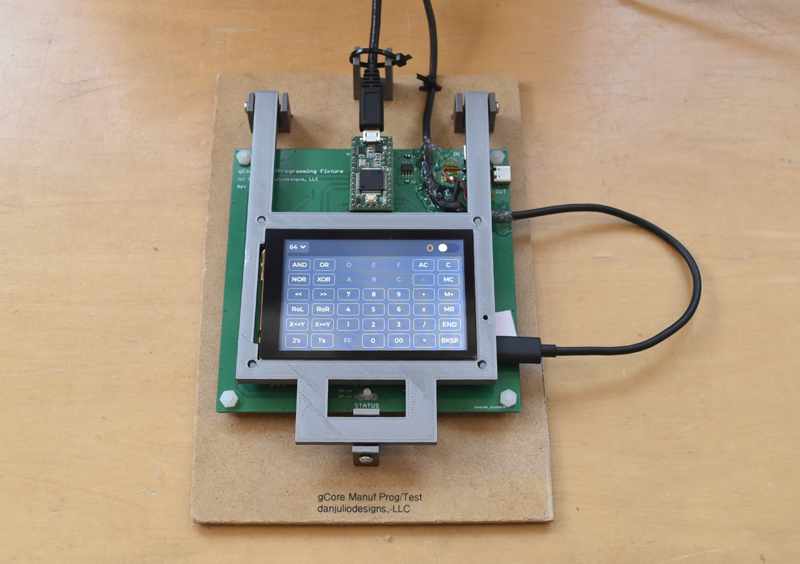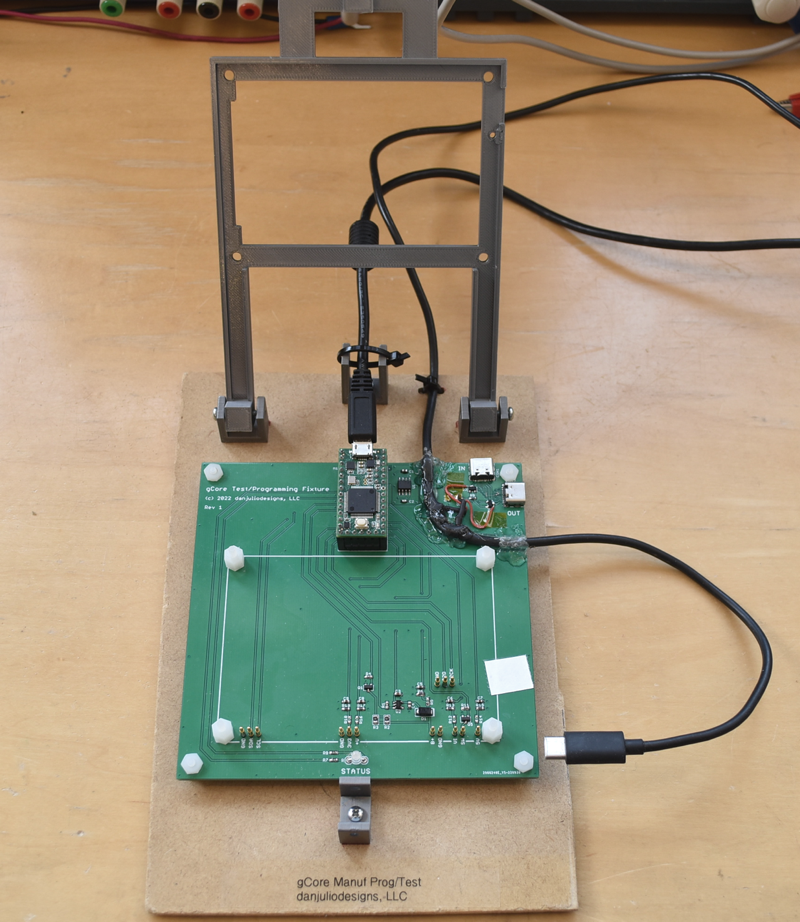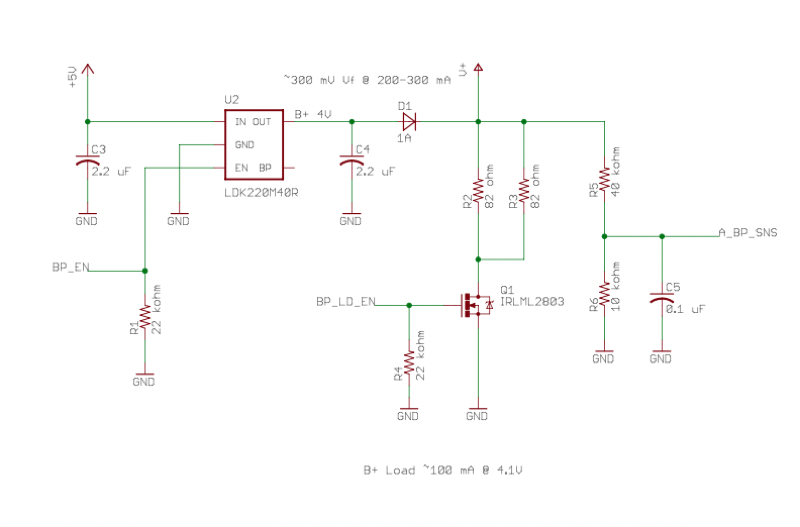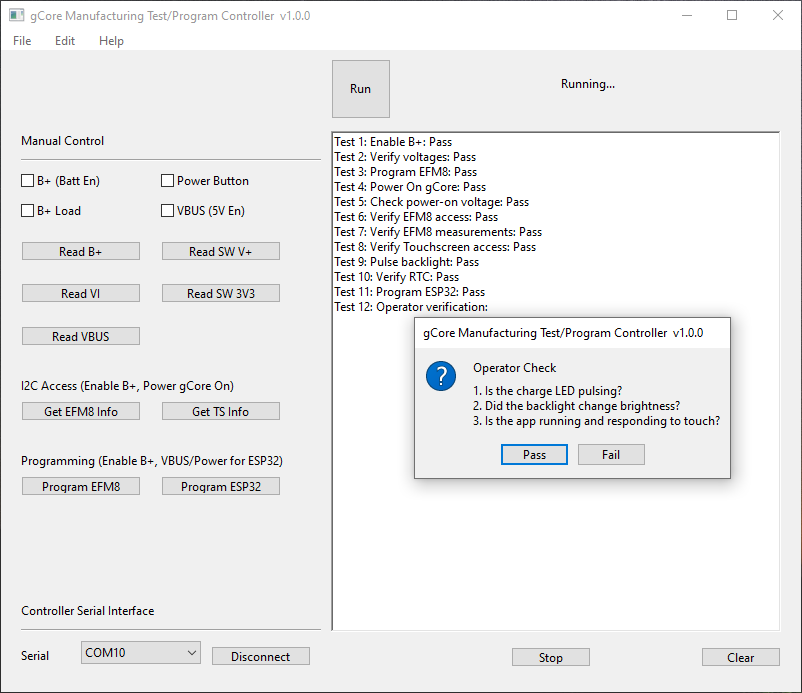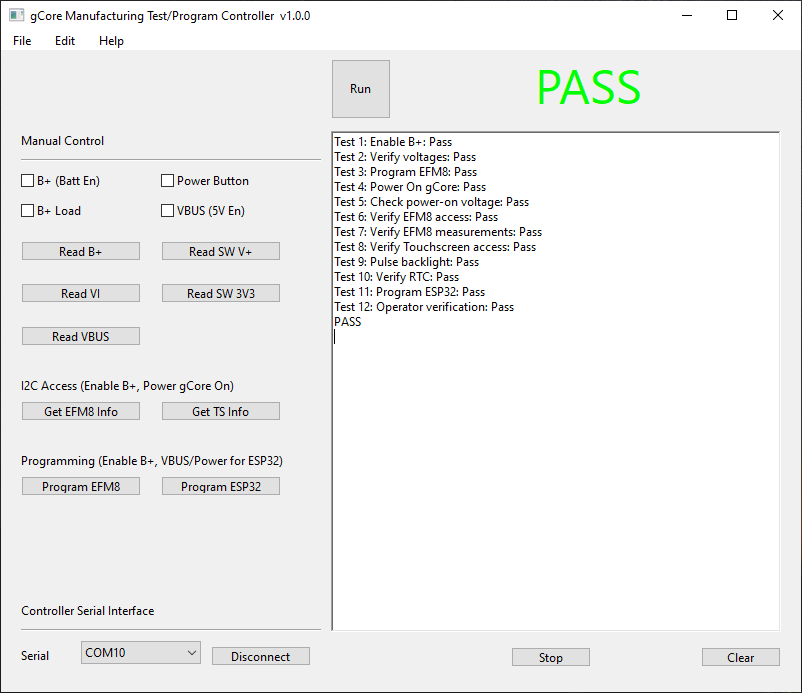-
Manufacturing test and programming fixture
11/24/2022 at 03:09 • 0 commentsThe functional test and programming fixture is done and ready to send to the contract manufacturer. It's a fairly simple piece of hardware with a bunch of software that, as usual, took me longer than I originally planned... It has the following functionality
- Functional hardware test
- Program EFM8 firmware
- Program the ESP32 with the calculator demo program (also used to verify the LCD and touchscreen functionality)
![]()
The hardware uses a PJRC Teensy 3.2 as a local controller with software running on a PC and connects to the gCore using a set of pogo-pins. A 3D printed mechanism holds the gCore down. The Teensy reads various voltages, outputs digital signals that control a simulated battery, power button and USB power supply, interfaces to the gCore I2C bus and implements a programmer for the EFM8. The ESP32 is programmed by the PC via USB.
![]()
Originally I intended the switched USB connection to gCore to run through a pair of USB-C connectors on the test fixture PCB. However I got some signals reversed so the connectors didn't work. I ended up just splitting a USB cable open, cutting the +5 line and running that through the pair of P-channel MOSFETs on the test fixture used to turn Vusb on and off. And holding the cable down with lots of glue.
On the other hand the circuit I designed to simulate a LiPo battery worked really well. The test fixture has to handle both a drain and charge of a simulated battery. I looked into a dual quadrant power supply design but the complexity and cost put me off. Then I realized all I really needed to test was that the charger IC put out current. That could be implemented by simulating a battery at one voltage through a Schottky diode and then observing if the voltage went close to 4.2V when the charger was active when Vusb was energized. The diode prevents back flow to the 4V regulator.
![]()
In the circuit above, +5V is supplied by teensy and U2 is a 4V regulator enabled by the Teensy using BP_EN. The voltage is routed through D1 to V+ which is connected to the battery input. When Vusb is supplied the charger IC on gCore will attempt to charge the battery to 4.2V. A small load is provided via Q1 so the charger sees some current flow. For a functional board V+ will jump from about 3.7-3.8 V to 4.1-4.2V when the charger is running and is sensed via A_BP_SNS.
Software running on the Windows PC (and Mac, for me) was written in xojo. The program encapsulates the pre-compiled esptool binary I found in the ESP32 Arduino package and binary files for both the EFM8 and ESP32. Although it has a set of manual controls, during normal operation the operator only has to press Run and acknowledge one dialog box for each board. Excluding the time to insert and remove a gCore the entire test and programming process takes around 20 seconds.
![]()
![]()
I still have to write a document that correlates error messages with parts of the gCore for debugging of failed boards.
-
gCore intro video
10/31/2022 at 20:03 • 0 commentsHere's a video describing gCore.
-
Group Gets Campaign
10/28/2022 at 20:17 • 0 commentsI've been working with the fine folks at Group Gets to bring gCore to market. Their initial campaign can be found here.
gCore is a bit more expensive than some development boards due to the feature set requiring lots of ICs, and the fact it's being built in the USA but I think the value it brings makes up for the additional cost. I know it will not be for everybody but I hope to empower those people who see the additional performance and features as worth a delta cost that's less than a night out on the town, forgotten in a few days time.
As with all my projects, please feel free to send me questions here or via my email.
gCore (II) - a dev board for portable GUI gadgets
A high-end ESP32 development board with a 480x320 pixel capacitive touchscreen and sophisticated features.
 Dan Julio
Dan Julio